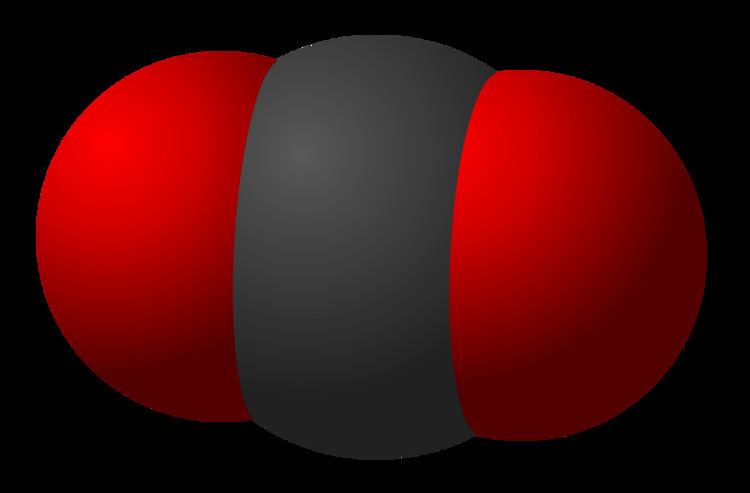ICD-9-CM 786.09 MeSH D006935 | ICD-10 R06.8 DiseasesDB 95 | |
 | ||
Hypercapnia, also known as hypercarbia and CO2 retention, is a condition of abnormally elevated carbon dioxide (CO2) levels in the blood. Carbon dioxide is a gaseous product of the body's metabolism and is normally expelled through the lungs.
Contents
- Signs and symptoms
- Causes
- Laboratory values
- During diving
- Failure to adequately eliminate CO2
- Skip breathing
- Rebreathers
- MRI
- Names
- References
Hypercapnia normally triggers a reflex which increases breathing and access to oxygen (O2), such as arousal and turning the head during sleep. A failure of this reflex can be fatal, for example as a contributory factor in sudden infant death syndrome.
Hypercapnia is the opposite of hypocapnia, the state of having abnormally reduced levels of carbon dioxide in the blood. The word is from the Greek hyper = "above" or "too much" and kapnos = "smoke".
Signs and symptoms
Symptoms and signs of early hypercapnia include flushed skin, full pulse, tachypnea, dyspnea, extrasystoles, muscle twitches, hand flaps, reduced neural activity, and possibly a raised blood pressure. According to other sources, symptoms of mild hypercapnia might include headache, confusion and lethargy. Hypercapnia can induce increased cardiac output, an elevation in arterial blood pressure, and a propensity toward arrhythmias. In severe hypercapnia (generally PaCO2 greater than 10 kPa or 75 mmHg), symptomatology progresses to disorientation, panic, hyperventilation, convulsions, unconsciousness, and eventually death.
Causes
Hypercapnia is generally caused by hypoventilation, lung disease, or diminished consciousness. It may also be caused by exposure to environments containing abnormally high concentrations of carbon dioxide, such as from volcanic or geothermal activity, or by rebreathing exhaled carbon dioxide. It can also be an initial effect of administering supplemental oxygen on a patient with sleep apnea. In this situation the hypercapnia can also be accompanied by respiratory acidosis.
Laboratory values
Hypercapnia is generally defined as a blood gas carbon dioxide level over 45 mmHg. Since carbon dioxide is in equilibrium with carbonic acid in the blood, hypercapnia can drive serum pH down, resulting in a respiratory acidosis. Clinically, the effect of hypercapnia on pH is estimated using the ratio of the arterial pressure of carbon dioxide to the concentration of bicarbonate ion, PaCO2/[HCO3−].
During diving
Normal respiration in divers results in alveolar hypoventilation resulting in inadequate CO2 elimination or hypercapnia. Lanphier's work at the US Navy Experimental Diving Unit answered the question "why don't divers breathe enough?":
Failure to adequately eliminate CO2
There is a variety of reasons for carbon dioxide not being expelled completely when the diver exhales:
Skip breathing
Skip breathing is a controversial technique to conserve breathing gas when using open-circuit scuba, which consists of briefly holding one's breath between inhalation and exhalation (i.e., "skipping" a breath). It leads to CO2 not being exhaled efficiently. There is also an increased risk of burst lung (pulmonary barotrauma of ascent) if the breath is held while ascending. It is particularly counterproductive with a rebreather, where the act of breathing pumps the gas around the "loop", pushing carbon dioxide through the scrubber and mixing freshly injected oxygen.
Rebreathers
In closed circuit SCUBA (rebreather) diving, exhaled carbon dioxide must be removed from the breathing system, usually by a scrubber containing a solid chemical compound with a high affinity for CO2, such as soda lime. If not removed from the system, it may be re-inhaled, causing an increase in the inhaled concentration.
MRI
The hypercapnic state is routinely used to calibrate blood-oxygen-level dependent functional magnetic resonance imaging (BOLD fMRI), a modality that is sensitive to changes in blood oxygenation. However, this calibration crucially relies on the assumption that hypercapnia has no effect on neuronal function, which is a matter of debate.
Names
The spelling hypercapnea is occasionally seen in published medical articles (44 results in a PubMed search in 2016), but it is not entered in major dictionaries and is not tied to any etymology that involves the -pnea suffix. It is most likely a misspelling by writers who misapprehend that the word hypercapnia ends in the same suffix that apnea does (but that is false).
